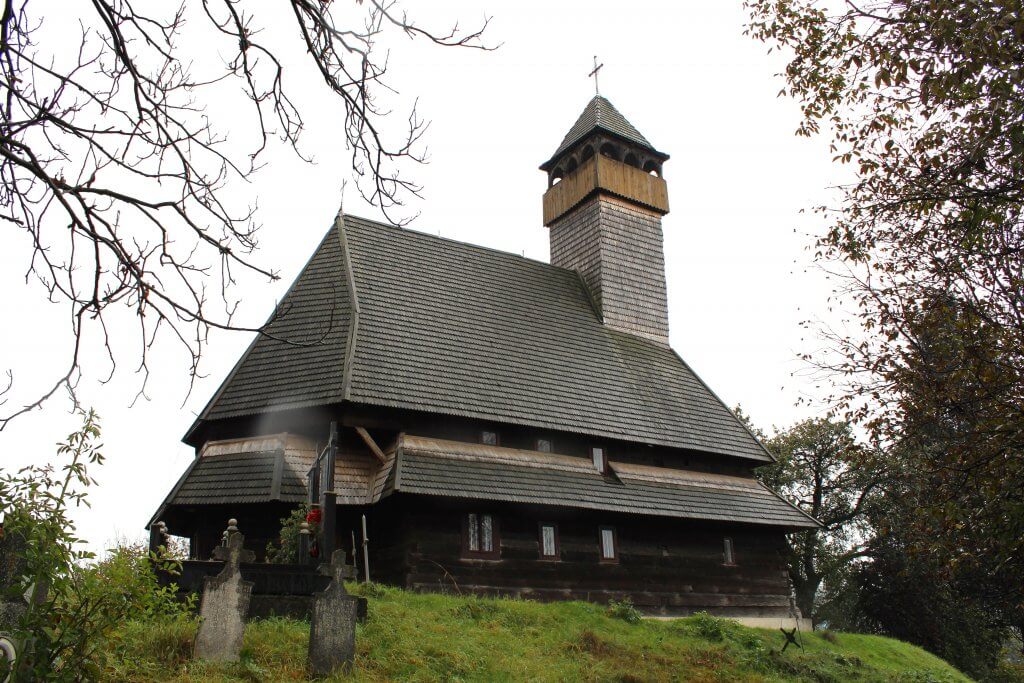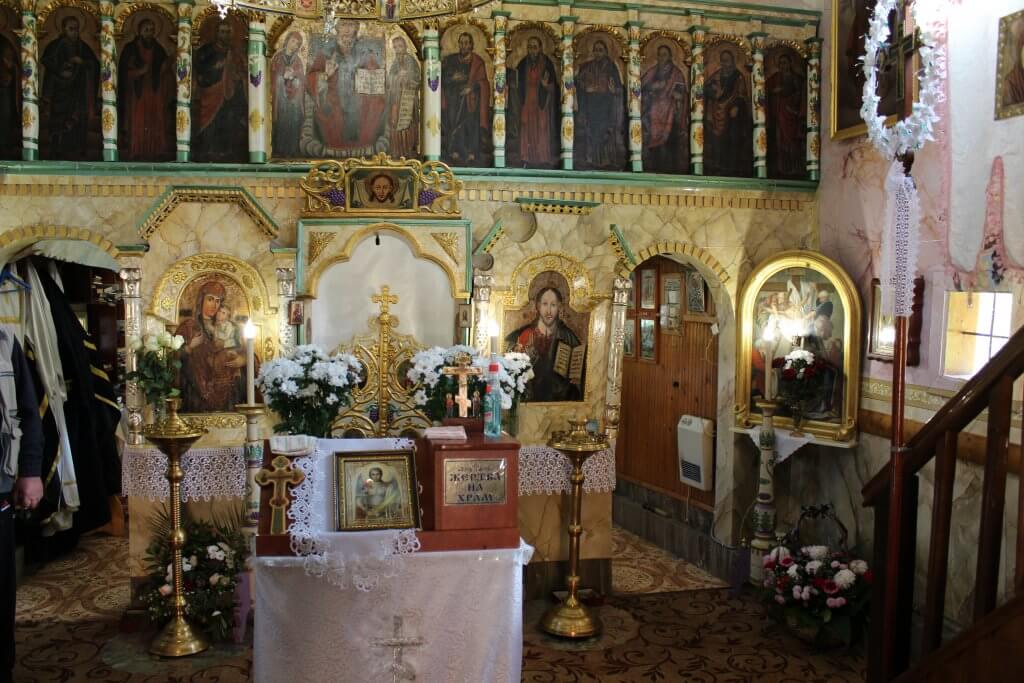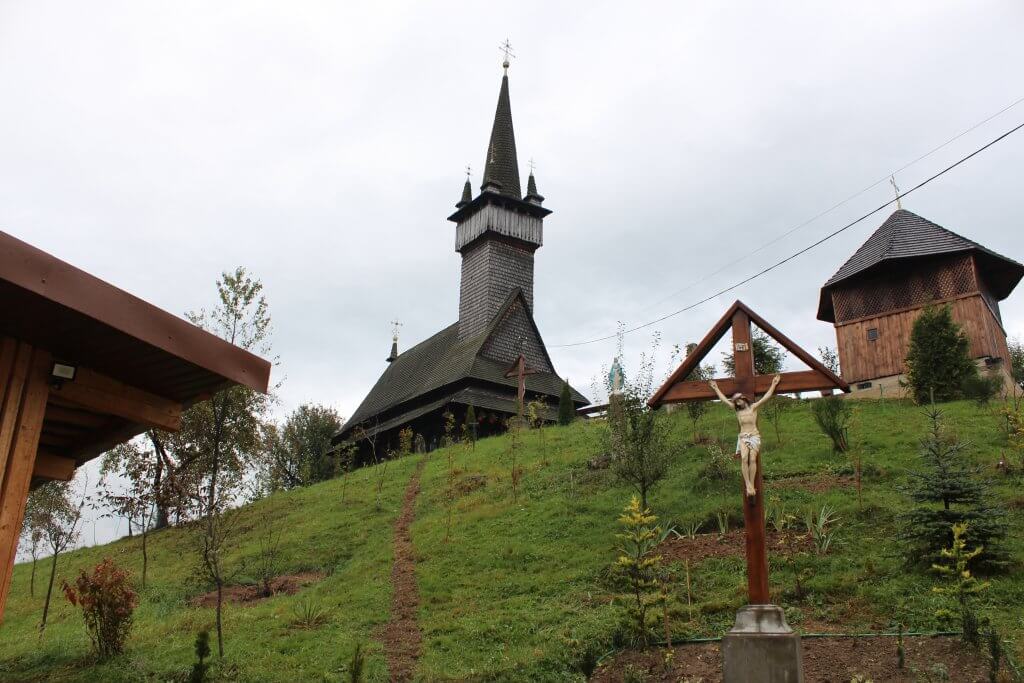The Department of Wood Science and Wood Technology at the Faculty of Forestry and Wood Technology of Mendel University (FFWT MENDELU) collaborates with colleagues at museums in Uzhhorod and Ivano-Frankivsk to date wooden churches located in the Transcarpathian region of Ukraine. By establishing a standard chronology for the area, Ukrainian colleagues will be able to more accurately determine the period of the churches’ construction, the age of the wood used, and the data will also contribute to paleoclimatic research.
With the goal of collecting samples from wooden churches in Transcarpathian Ukraine and using them to create a standard chronology for the region, the Department of Wood Science and Wood Technology reached out to the museums in Uzhhorod and Ivano-Frankivsk in 2020. From two field trips, researchers collected 174 samples from twelve primarily oak churches.
“We collect samples using a Pressler increment borer. We select beams with the highest number of preserved tree rings, both large and small beams with narrower rings, to gather as much information as possible. We also try to select beams that have the so-called under-bark ring, the last ring the tree formed before it was felled, or samples where the sapwood is preserved, the outer lighter part of the wood,” explained lead researcher Irena Sochová.
Thanks to these samples, dendrochronologists are able to date the churches more precisely, either within a range of years (if sapwood is preserved) or even down to the specific season of the year (if the under-bark ring is present). “We sand the samples in the department’s laboratories and measure the width of the tree rings at a measurement table. This creates a tree-ring curve. Each year corresponds to a specific ring width. By comparing these curves with the standard chronology, we can date the church because the curves will match with the standard,” Sochová explained.
The team took samples mainly from areas around Uzhhorod and Mukachevo in Transcarpathian Ukraine.



Thanks to the collaboration with experts from FFWT MENDELU, Ukrainian museum curators will obtain more accurate dating of the churches than they previously had. “They get their information on the age of the churches from literature or preserved records. Often, they know when the church appeared in a specific village, but it could be much older because it might have been relocated from another village. Additionally, they will now receive information on the age of the wood used, which might be older than the church itself. We’ve already encountered such a situation,” commented the researcher on the importance of this collaboration.
This topic is also historically tied to former Czechoslovakia. “After Transcarpathian Ukraine was annexed to Czechoslovakia after World War I, five wooden oak churches were transported from the Transcarpathian region to our territory, where they remain. We took samples from these churches to establish the standard chronology, precisely date them, and compare them with churches in Ukraine,” Sochová added.
Preserved wooden churches are an important monument of Ukrainian history. Some of them are listed as UNESCO cultural heritage sites, and many are located in the open-air museum in Uzhhorod.
Due to the ongoing war in Ukraine, further sample collection in the studied areas is currently not possible. However, FFWT MENDELU remains in contact with colleagues from the Uzhhorod museum.
Contact for further information:
Ing. Irena Sochová, Department of Wood Science and Wood Technology, FFWT MENDELU, +420 545 134 54 irena.sochova@mendelu.cz
More news
-
For two decades, the Czech Liaison Office for Education and Research in Brussels (CZELO) has been supporting Czech institutions, researchers, and students in engaging with European programmes in education, science, and innovation. At the…9. 10. 2025
-
Scientific expedition in Mongolia: new butterfly discoveries and warning signs…
Experts from Mendel University, in collaboration with colleagues from other scientific institutions, conducted biodiversity mapping during a three-week summer stay in Mongolia, focusing on the southwestern part of the country, the Gobi Altai region…28. 8. 2025 -
Coffee cultivation has a poor future due to climate change, agroforestry system…
Globally, coffee provides a livelihood for 125 million people. But forecasting models show that its cultivation has a poor future due to climate change. Sites suitable for growing Coffea arabica are predicted to decline dramatically. In that case,…4. 8. 2025 -
A new publication on biodiversity of the floodplain landscape in the…
Ecological Changes and Biodiversity of the Floodplain Landscape in the Morava–Dyje Confluence Area is the title of a book that will be published in the second half of 2025. It is the result of the work of a broad spectrum of experts specializing in…28. 7. 2025 -
EuAsiaN-ROOT Project Unveils Collaborative Research on Tree-Root-Mycorrhizal…
The Horizon Europe project, Eurasian Network for Collaborative Research on Tree-Root-Mycorrhizal-Pathogen Interactions in Forest Soils (EuAsiaN-ROOT), coordinated by the Faculty of Forestry and Wood Technology, aims to provide a deeper…24. 6. 2025 -
Five Female Wolves Fitted with GPS Collars in the Beskydy and Javorníky…
Researchers from the Faculty of Forestry and Wood Technology at Mendel University in Brno have successfully captured and fitted GPS telemetry collars on five female wolves in the Beskydy and Javorníky Mountains over the past two years. These…28. 5. 2025 -
FFWT launches unique data collection on forest ecosystem functioning in MENDELU…
The Department of Forest Ecology at the Faculty of Forestry and Wood Technology of Mendel University in Brno (FFWT MENDELU), in cooperation with the Masaryk Forest Training Enterprise at Křtiny (ŠLP Křtiny), has launched monitoring of selected…23. 5. 2025 -
Professor Vladimír Tesař on the 30th anniversary of Pro Silva Bohemica: focus…
The Faculty of Forestry and Wood Technology and other stakeholders commemorated the thirtieth anniversary of Pro Silva Bohemica, an association of foresters dedicated to promoting close-to-nature forest management. Professor Emeritus Vladimír Tesař…9. 5. 2025 -
Scientists aim to determine which tree species have the most significant…
An international team studying the growth of 223 tree species across 160 experimental forests worldwide has found that conservative tree species—efficiently conserving resources such as nutrients, water, and energy—tend to grow faster under natural…16. 4. 2025 -
FFWT and UFE Křtiny partners of the ForDiL project supporting the education of…
The Faculty of Forestry and Wood Technology, Mendel University (FFWT MENDELU) and the University Forest Enterprise Masaryk Forest Křtiny (UFE Křtiny) are the main partners of the ERASMUS+ project Forest of the future: digital tools for learners to…11. 4. 2025